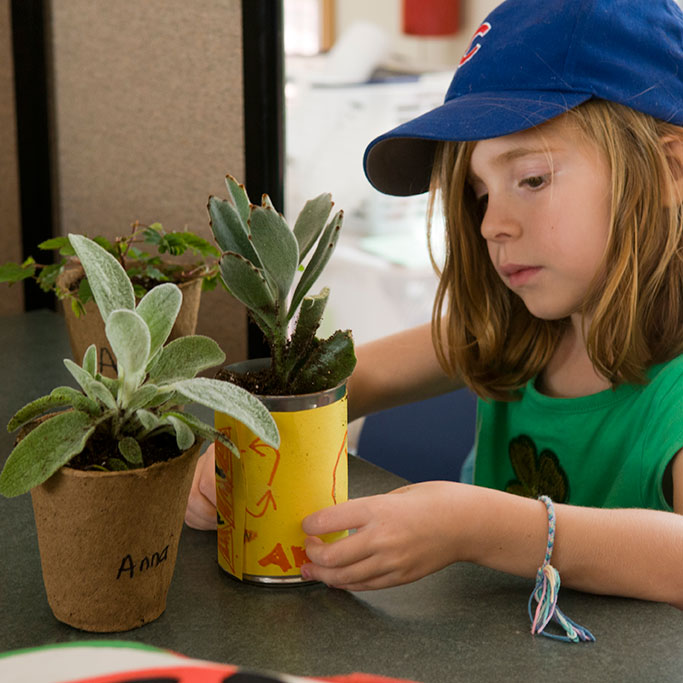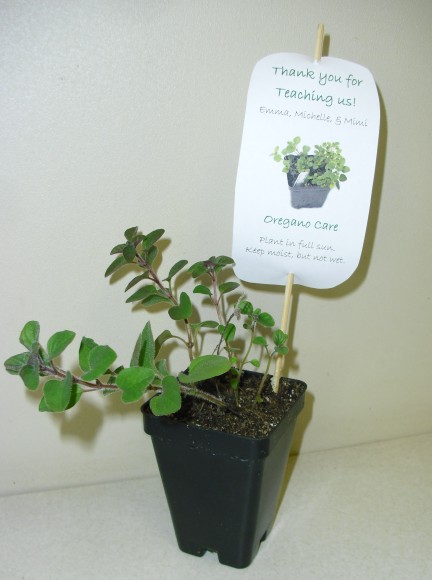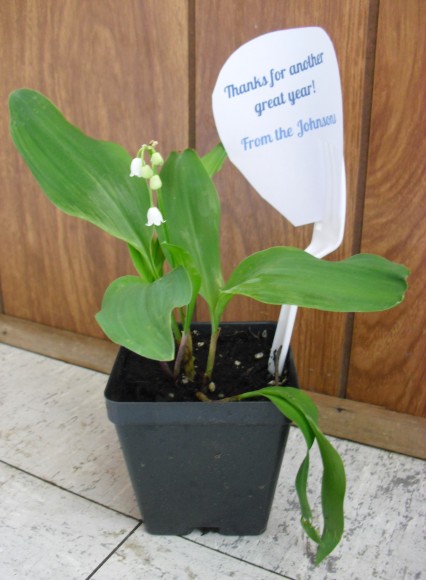Having three daughters in middle school means trying to find a nice way to show my appreciation to all of their teachers. When I say “all” for the middle grades, that is not just three teachers any more, because they have separate teachers for each subject, as well as “special” teachers for art, gym, music, and library. And then there is the office staff members who were really nice and helpful during the year.
Do I need to give everyone something? Certainly not. But I would like to end the year on a pleasant note and say “Thanks!” for serving my three children—without spending too much money, that is. The answer is plants (which is what you expected from a Chicago Botanic Garden blogger, right?).
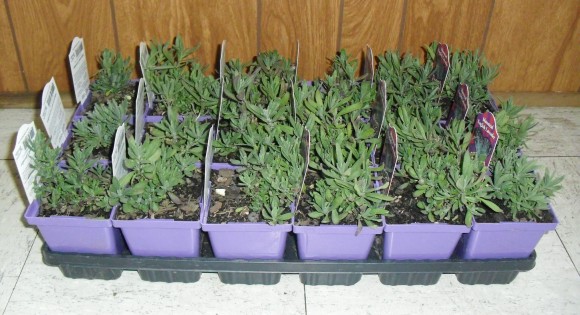
Every year, I go to a local nursery and buy a few flats of herbs or flowers. I prefer going to a local, small nursery or greenhouse rather than a large franchise store that sell other products. The plants tend to be in better condition, and supporting local businesses is good for the community. And it’s fun meeting and getting to know small business owners.
My daughters help choose the plants, which means we usually get purple flowers of some kind. If the plants come in cell packs, we transplant them to inexpensive containers. Otherwise, we give them as they come from the nursery. It does not have to be fancy to make everyone happy.
We make a thank-you note on the computer. It includes information about how to care for that plant. Then we use use bamboo skewers (left over from making rock candy!) or plastic forks to hold them in place.
I set aside one plant for each daughter to personally present to her homeroom teacher. I bring the rest of the plants to the school office during the last week. After years of doing this, the office staff now anticipates the delivery as if it’s Christmas. (I also bring a package of paper lunch bags so teachers have a clean way to carry their plants home.)
The principal makes an announcement during the school day that any teacher who would like a plant can pick one up in the office—first come, first served. Even if a teacher doesn’t want to take a plant (I’m pretty sure the computer lab instructor at our school is not interested), he or she can enjoy looking at them and smelling them in the office. That takes care of everyone I want to thank. All plants are claimed by the end of the day.
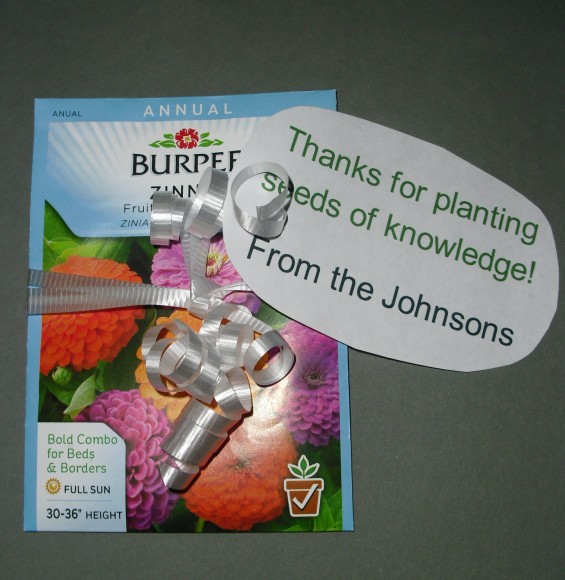
If this works for me, it can work for you, too. If plants are too much of a hassle or expense, consider giving seeds instead. Attach a ribbon with a note to let the teacher know your gratitude. You can say something cute such as “Thanks for helping me grow!”
Or use a clever rhyme:
Just like the year I spent in your room, I hope these seeds germinate, grow up, and bloom.
Looking for another idea? There’s always Bottle Cap Bouquets, which delight teachers and mothers alike. Cheap and cheerful!
I wasn’t sure how much the teachers appreciated the plants until one teacher asked my daughter if I would be bringing plants again, and what kind they might be. She was looking forward to the end of school, but she was also looking forward to taking home a plant to start the summer.
©2014 Chicago Botanic Garden and my.chicagobotanic.org

